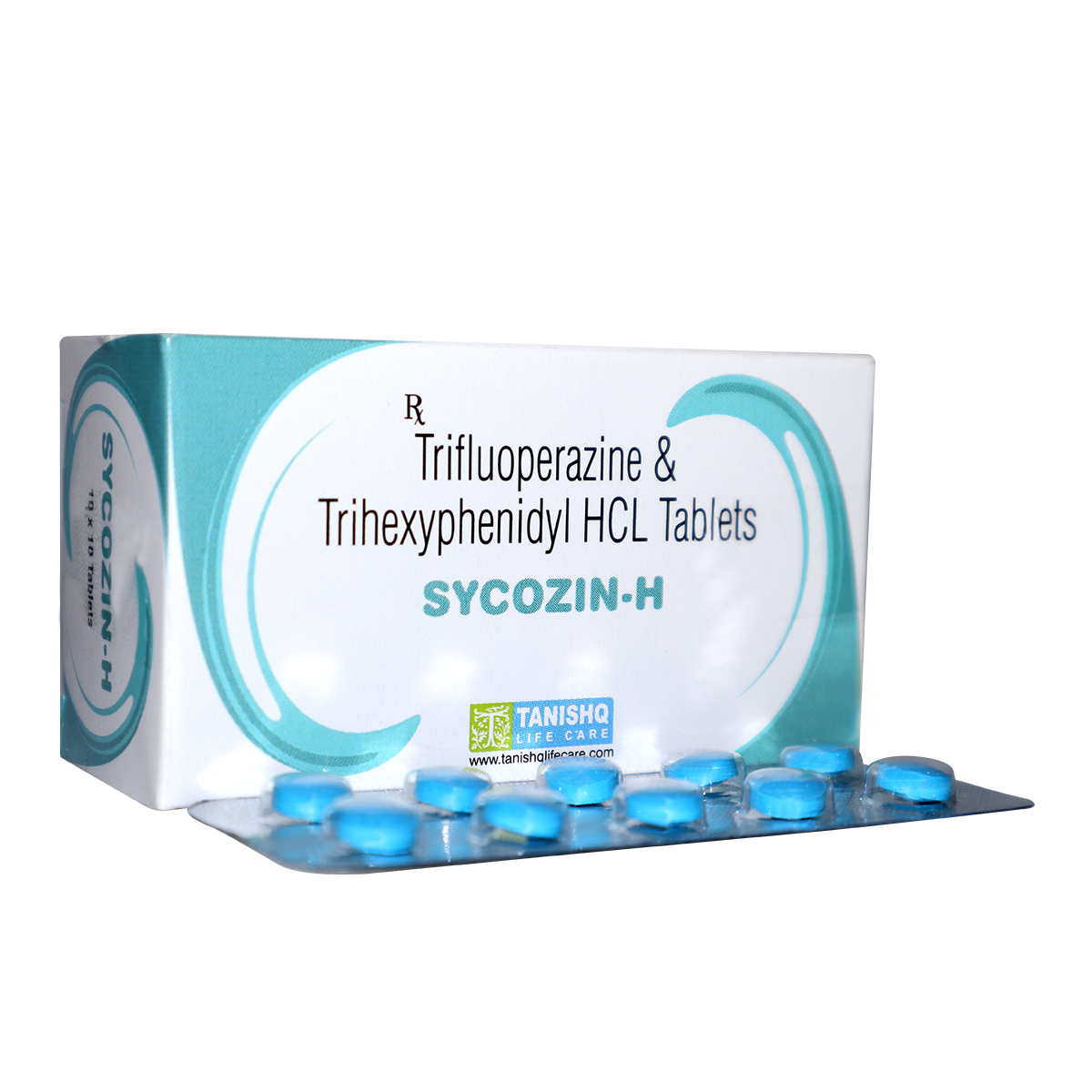
Rifluoperazine 2.5mg Tablet, Trihexyphenidyl 1mg Tablet
1. Rifluoperazine 2.5mg Tablet
Trifluoperazine is a first-generation (typical) antipsychotic from the phenothiazine class. It works by blocking dopamine receptors in the brain to help control symptoms of certain psychiatric conditions.2. Trihexyphenidyl 1mg Tablet
Trihexyphenidyl is an anticholinergic used to manage Parkinson’s disease symptoms and treat drug-induced extrapyramidal symptoms (such as tremors and rigidity).- Recommended Usage
1. Rifluoperazine 2.5mg Tablet
Indications
- Schizophrenia (acute and chronic)
- Anxiety (short-term management, especially in severe cases)
- Severe nausea and vomiting (as an antiemetic)
Dosage and Administration
Schizophrenia: Start with 2-5 mg/day, gradually increasing up to 10-15 mg/day as needed.
Anxiety: Start with 1-2 mg/day, increasing to 4-6 mg/day, based on response.
Administer 1-3 times daily.
Can be taken with or without food.
Elderly or patients with liver/renal impairment: Start with a lower dose (1-2 mg/day) and increase cautiously.
Precautions
Extrapyramidal symptoms: Tremors, rigidity, and tardive dyskinesia are potential side effects with prolonged use.
Neuroleptic malignant syndrome (NMS): Rare, but serious, presenting with fever, muscle rigidity, altered mental status, and autonomic instability.
Sedation: Can cause drowsiness or dizziness, especially at higher doses.
Cardiovascular effects: Can cause orthostatic hypotension and QT prolongation, requiring monitoring.
Use caution in elderly: Increased risk of side effects, especially in patients with dementia-related psychosis.
Avoid abrupt withdrawal to prevent withdrawal symptoms.
2. Trihexyphenidyl Hydrochloride 2mg
Indications
- Parkinson's disease (to control tremors, rigidity, and bradykinesia)
- Extrapyramidal symptoms from antipsychotic medications (e.g., parkinsonism, dystonia, tardive dyskinesia)
Dosage and Administration:
Parkinson's disease: Start with 1-2 mg/day, gradually increasing to 6-10 mg/day based on clinical response.
Extrapyramidal symptoms: 1-2 mg/day, increasing as needed to control symptoms.
Can be taken 1-3 times daily.
Can be taken with or without food.
Precautions:
Anticholinergic effects: Dry mouth, blurred vision, constipation, urinary retention, cognitive disturbances.
Glaucoma: Contraindicated in patients with narrow-angle glaucoma.
Elderly: Higher sensitivity to anticholinergic effects like confusion, agitation, and sedation.
Urinary retention or BPH: Use with caution due to potential worsening of symptoms.
Cognitive issues: Use cautiously in patients with dementia or cognitive impairment.
Product Category
- Anti Infective
- Injectables
- Pre Filled Syringe
- Immunosuppressants
- Anti Ulcerant/ppis
- Joint Care
- Enzymes
- Heamatinic Agents
- Antioxidant Multivitamins
- Laxatives
- Anti Alergic
- Corticosteroids & Combinations
- Anti Fungal
- Medicated Soaps
- Emollients and Moisturisers
- Face Care
- Puva & Sun Protectors
- Hair Care
- Anti Acne Preparation
- Analgesics Antipyretics & Anti Inflammatory
- Anti Spasmodic & Anti Emetic
- Expectorants Antitussives & Mucolytics
- Antidiarrheals
- Cardiac Drugs
- Antipsychotics
- Anti Epileptics
- Migraine
- Anti Dyspetic
